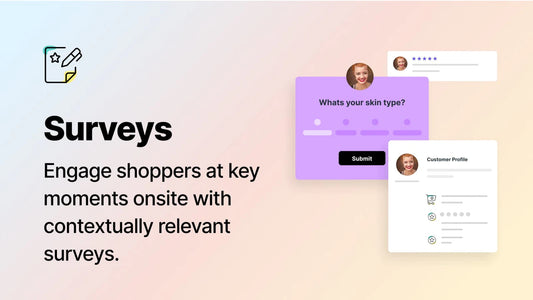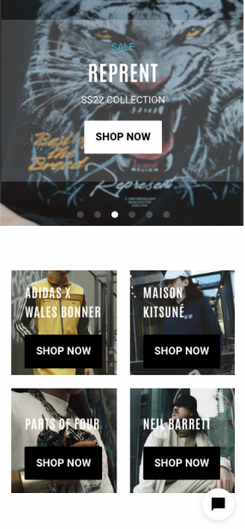If you're running an eCommerce business, you're probably looking for ways to increase your revenue and customer loyalty. Well, let me introduce you to RFM Segmentation, the secret weapon you didn't even know you needed! In this article, we'll explain what RFM segmentation is, how to conduct an RFM analysis, and how to use the research to generate optimisation and growth ideas for your website and marketing.
What is RFM Segmentation?
RFM segmentation is a customer segmentation technique that uses three important factors to identify and classify customer groups: Recency, Frequency, and Monetary. Recency refers to the time since a customer's last purchase or interaction with a business. Frequency refers to the number of purchases or interactions a customer has made over a given period of time. Monetary refers to the total amount of money a customer has spent on purchases or interactions with a business.
It's a way of analysing customer behaviour and segmenting them based on their purchase history. It's not just some fancy abbreviation that someone came up with to confuse you. It's actually a game-changing strategy that can help you increase the Customer Lifetime Value of your store.

How does it work?
Recency: This is based on the last time a customer made a purchase. Customers who recently made a purchase are more likely to make another purchase. These customers should be targeted with promotions, discounts, and new product offerings.
Frequency: This is based on how often a customer makes a purchase. Customers who frequently purchase from your store are more loyal and engaged. These customers should be rewarded with loyalty programs, special offers, and exclusive access to new products.
Monetary: This is based on how much a customer spends on each purchase. Customers who spend more are more valuable to your store. These customers should be targeted with premium products, high-ticket items, and personalised experiences.
By analysing these three factors, businesses can identify different customer segments and tailor their marketing strategies to each group. For example, a business may focus on re-engaging customers who haven't made a purchase in a long time (low recency), encourage frequent purchasers to become loyal customers (high frequency) or offer special promotions to customers who have spent a lot of money in the past (high monetary).
Now that you know what RFM segmentation is and how it works, now let’s talk about how to conduct an RFM Analysis.
How to Conduct an RFM Analysis

To conduct an RFM analysis, you'll need to gather data on your customers' purchases or interactions with your business. This data can be found in your eCommerce platform, CRM, or other marketing tools. Once you have the data, you'll need to calculate the recency, frequency, and monetary values for each customer.
Recency can be calculated by subtracting the date of a customer's last purchase or interaction from the current date. Frequency can be calculated by counting the number of purchases or interactions a customer has made over a given period of time. Monetary can be calculated by adding up the total amount of money a customer has spent on purchases or interactions with your business.
Once you have calculated these values for each customer, you can segment them into different groups based on their RFM scores. For example, customers who have high scores in all three areas (recent, frequent, and high monetary) are considered to be the most valuable customers, while customers who have low scores in all three areas may need to be re-engaged. Here’s how you can use it to increase the Customer Lifetime Value of your store.
Using RFM Segmentation to Increase Customer Lifetime Value
Identify Your Best Customers
You can identify your best customers by segmenting your customers based on their purchase history. These are the customers who have made the most purchases, spent the most money, and made a purchase most recently. Once you've identified your best customers, you can focus your marketing efforts on them. Offer them exclusive discounts, early access to new products, and personalised experiences. Make them feel special, and they'll keep coming back for more.
Product Cross-Sells and Upsells
Once you know what your customers have purchased, you can use this information to suggest complementary products or upsell higher-priced items. For example, if a customer has purchased a dress, you could suggest a pair of shoes that would match perfectly. Or, if a customer has purchased a lower-priced item, you could suggest a higher-priced item that would provide more value.
Abandoned Cart Emails
RFM Segmentation can also be used to send targeted abandoned cart emails. If a customer who frequently purchases from your store abandons their cart, you can send them a personalised email reminding them of what they left behind. You could even offer them a discount or special offer to incentivise them to complete their purchase.
Personalised Recommendations
Using RFM Segmentation, you can also provide personalised product recommendations to your customers. Based on their purchase history, you can suggest products that they might be interested in. For example, if a customer has purchased a skincare product, you could suggest a moisturiser or serum that would complement their purchase.
Customer Value Optimisation
Customer Value Optimisation (CVO) is a strategy that focuses on maximising the Customer Lifetime Value of your store. By using RFM Segmentation, you can identify your best customers, offer them personalised experiences, and provide them with relevant product recommendations. This will help increase their loyalty to your store, increasing their Customer Lifetime Value.
Using RFM Segmentation to Generate Optimisation and Growth Ideas
Once you have segmented your customers using RFM analysis, you can use the research to generate optimisation and growth ideas for your website and marketing. Here are some ideas to get you started:
Personalisation: Use the RFM scores to personalise your website and marketing messages for each customer segment. For example, you can offer special promotions or recommendations to customers with high monetary values or create targeted email campaigns for customers with low recency scores.
Improved UX: Use the RFM scores to optimise your website's user experience (UX) for each customer segment. For example, you can create personalised landing pages for customers who have high monetary values or simplify the checkout process for customers who have low-frequency scores.
Customer Service: Use the RFM scores to improve your customer service for each customer segment. For example, you can offer a VIP support line for customers who have high scores in all three areas or send personalised thank-you notes to customers who have made recent purchases.
Why RFM Segmentation is a Game Changer
RFM Segmentation is a game changer because it allows you to understand your customers better. By segmenting your customers based on their purchase history, you can tailor your marketing efforts to their specific needs and preferences. This will help increase their loyalty to your store, which will ultimately increase their Customer Lifetime Value (CLV). RFM Segmentation is also cost-effective because it allows you to target your marketing efforts only to those customers who are most likely to make a purchase, reducing marketing waste.
Not only that, but RFM Segmentation can also help you identify customers who are at risk of churning. If a customer hasn't made a purchase in a while, you can send them a targeted email or offer to encourage them to make a purchase. This can help prevent them from churning and losing them as a customer.

Tools for RFM Segmentation
Now that you know how powerful RFM Segmentation can be for your eCommerce store, you're probably wondering what tools you can use to implement it. Well, here are a few options:
Omniconvert is a platform that allows you to create personalised experiences for your customers based on their behaviour. Using RFM Segmentation, you can segment your customers and offer them personalised experiences that will keep them coming back for more.
Klaviyo is an email marketing platform that allows you to create targeted email campaigns. Using RFM Segmentation, you can send personalised emails to your customers based on their behaviour, increasing the likelihood that they will make a purchase
Blend Commerce Shopify Plus Agency
Blend Commerce is a Shopify Plus agency that specialises in helping eCommerce stores grow. We can help you implement RFM Segmentation and other strategies to increase your store's revenue and Customer Lifetime Value.
Why RFM segmentation is for you.
In conclusion, RFM segmentation is a game changer for eCommerce businesses. By analysing your customers' recency, frequency, and monetary values, you can identify different customer segments and tailor your marketing strategies to each group. Use the research to generate optimisation and growth ideas for your website and marketing, and watch your revenue and customer loyalty soar!
So, what are you waiting for? Start using RFM Segmentation in your eCommerce store today and watch your business thrive! And if you need help implementing RFM Segmentation and other strategies to grow your eCommerce store, consider working with us at Blend Commerce. We can help take your store to the next level!







